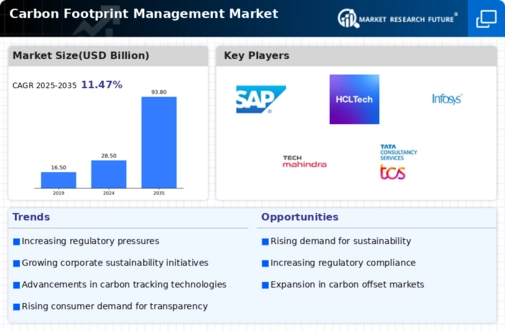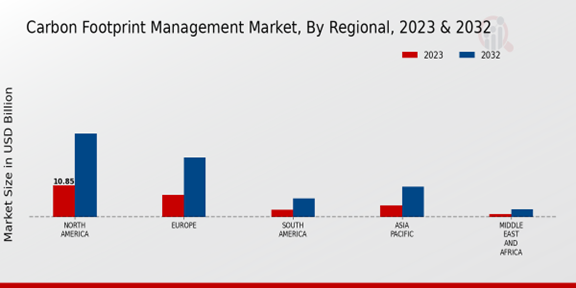Major players in the Carbon Footprint Management Market industry are constantly striving to gain a competitive edge by introducing innovative solutions and expanding their product portfolios. Leading Carbon Footprint Management Market players are actively involved in strategic partnerships, acquisitions, and collaborations to strengthen their market position and expand their global reach. The Carbon Footprint Management Market development landscape is characterized by the presence of both established players and emerging startups, each offering a unique value proposition to cater to the diverse needs of customers.
Companies are focusing on developing user-friendly and cost-effective solutions to meet the growing demand for carbon footprint management solutions across various industries. The competitive landscape is expected to remain dynamic as new technologies emerge and customer preferences evolve. One of the leading companies in the Carbon Footprint Management Market is SAP SE. The company offers a comprehensive suite of carbon footprint management solutions that enable organizations to track, measure, and reduce their carbon emissions. SAP's solutions are designed to help businesses comply with regulatory requirements, improve operational efficiency, and enhance their sustainability performance.
The company has a strong global presence and serves a wide range of industries, including manufacturing, energy, and transportation. SAP's commitment to innovation and customer satisfaction has positioned it as a trusted partner for organizations looking to manage their carbon footprint effectively. A notable competitor in the Carbon Footprint Management Market is IBM Corporation. IBM offers a range of carbon footprint management solutions that help organizations measure, analyze, and reduce their carbon emissions. The company's solutions are designed to provide businesses with actionable insights into their carbon footprint, enabling them to make informed decisions to reduce their environmental impact.
IBM's solutions are used by a wide range of organizations, including governments, businesses, and non-profit organizations. The company's focus on providing innovative and scalable solutions has made it a strong competitor in the Carbon Footprint Management Market.
















